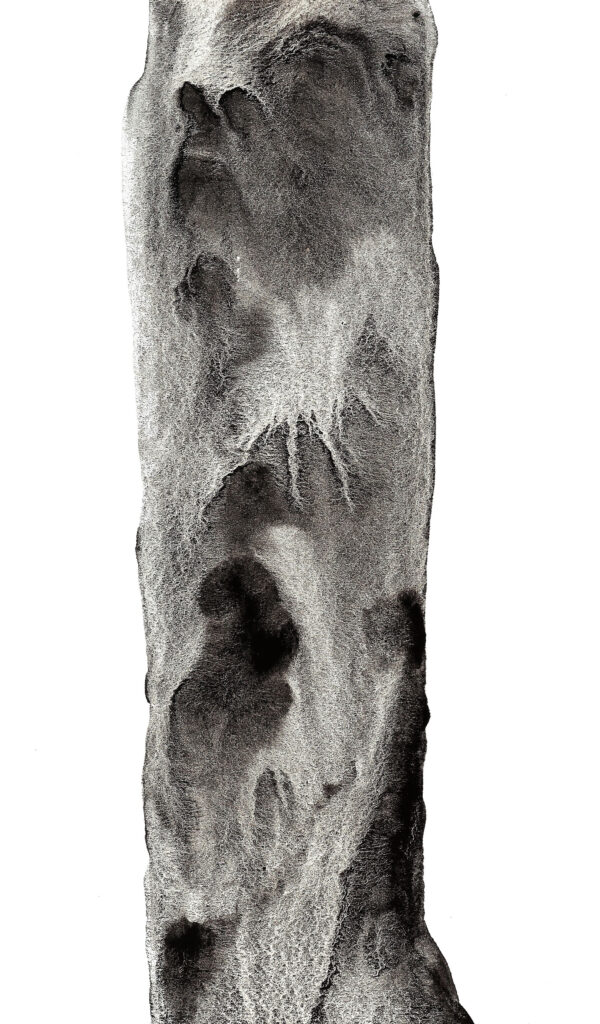Suzanne Simard, in her new book, Finding the Mother Tree (which I review here), writes deeply about connection: “It’s our disconnectedness—and lost understanding about the amazing capacities of nature—that’s driving a lot of our despair, and plants in particular are objects of our abuse.” I’d argue that all of nature has become the object of our abuse. The COVID-19 pandemic has shown us how vulnerable and connected we are to nature and to each other. In the months we sat at home in quarantine, nature healed. Nature has given us a warning and a second chance, but I don’t think we’ll listen. Have we learned nothing about our need for connection to each other, and our connection to the natural world? I watch the world “return to normal” and wonder what calamities will await us next, if we don’t choose a path of radical change.
Simard’s research explores the interconnectedness of trees in the forest. She theorizes that in every forest, there are elder “mother trees” that share resources with their offspring, and also with other young trees, even those of different species. Through her research, Simard has shown how trees communicate with one another and share resources through fungal networks in the soil. Simard has revealed how a forest thrives when it is connected, and how trees and plants struggle when they are not connected to one another. Humans are the same. We thrive when we are connected to family and community and to one another. We suffer and struggle alone.
Simard writes: “I don’t presume to grasp Aboriginal knowledge fully. It comes from a way of knowing the earth—an epistemology—different from my own culture… Of knowing that we are tied to the land—the trees and animals and soil and water—and to one another, and that we have a responsibility to care for these connections and resources, ensuring the sustainability of these ecosystems for future generations and to honor those who came before. Of treading lightly, taking only what gifts we need, and giving back. Of showing humility toward and tolerance for all we are connected to in this circle of life.”
The understanding of our connection inspires reverence for all living things, and also commands respect.
Simard explains that “if we harm one species, one forest, one lake, this ripples through the entire complex web. Mistreatment of one species is the mistreatment of all.” Perhaps our gravest mistreatment involves our mistreatment of one another. The original sin of colonialism was to mistreat native peoples, and as a consequence of that, to destroy entire ecosystems.
Simard’s argument, in Finding the Mother Tree, is that we heal through connection.
When Simard was diagnosed with cancer, her doctors explained to her that her chances of healing would depend upon exercise, sleep, eating well, and reducing stress, but above all else, her healing would depend upon the strength of her relationships. Connection to family, to a healing community, and to friends helped Simard heal. It’s a lesson we might be able to bring into our own lives, a gap I perceive in my own.
Perhaps we should start our healing by honoring our connection to each other, and our connection to nature?
Simard writes: “There is no moment too small in the world. Nothing should be lost. Everything has a purpose, and everything is in need of care.” Perhaps we heal the earth not with grand gestures, but with small ones performed on a daily basis. It’s the trash picked up from the ground, the attention we pay to the birds and trees around us, the kindness we show to the ones we love–and to passing strangers. Nothing is too small.
Good decisions compound into greater change. In life, we only make meaningful change by making one good decision after another, day after day.
A tree grows into its full glory over many, many years. You can’t directly observe a tree’s growth. It happens so slowly. In life and in communities, growth may be similar. The good we want to see often takes a long time to manifest. It involves hard work day after day. Eventually, a tipping point is reached, but you wouldn’t see it in the middle of the work, or in the midst of the growth. Nature demands patience. Think of the smallest sea turtle struggling across the beach. It will be many years before it is big enough to return.

Trees cut off from each other suffer, get sick, and die. People do too.
We must learn how to build our lives with long-term goals in mind. We must be brave enough to know ourselves and listen to ourselves so that when the time comes to speak up, we can do so loudly, clearly, and with conviction. This is the only way we can authentically connect, the only way we can begin to change the world.
Simard writes: I was afraid to stand strong with my conviction, fight tooth and nail. But isn’t this what my trees were showing me too? That health depends on the ability to connect and communicate…”
Nature doesn’t lie to us. If we pay attention and listen, it gives us the answers we need to hear.
Finding the Mother Tree by Suzanne Simard at Amazon.com (affiliate link)
Finding the Mother Tree by Suzanne Simard at Bookshop.org (affiliate link)
About the Writer
Janice Greenwood is a writer, surfer, and poet. She holds an M.F.A. in poetry and creative writing from Columbia University.
